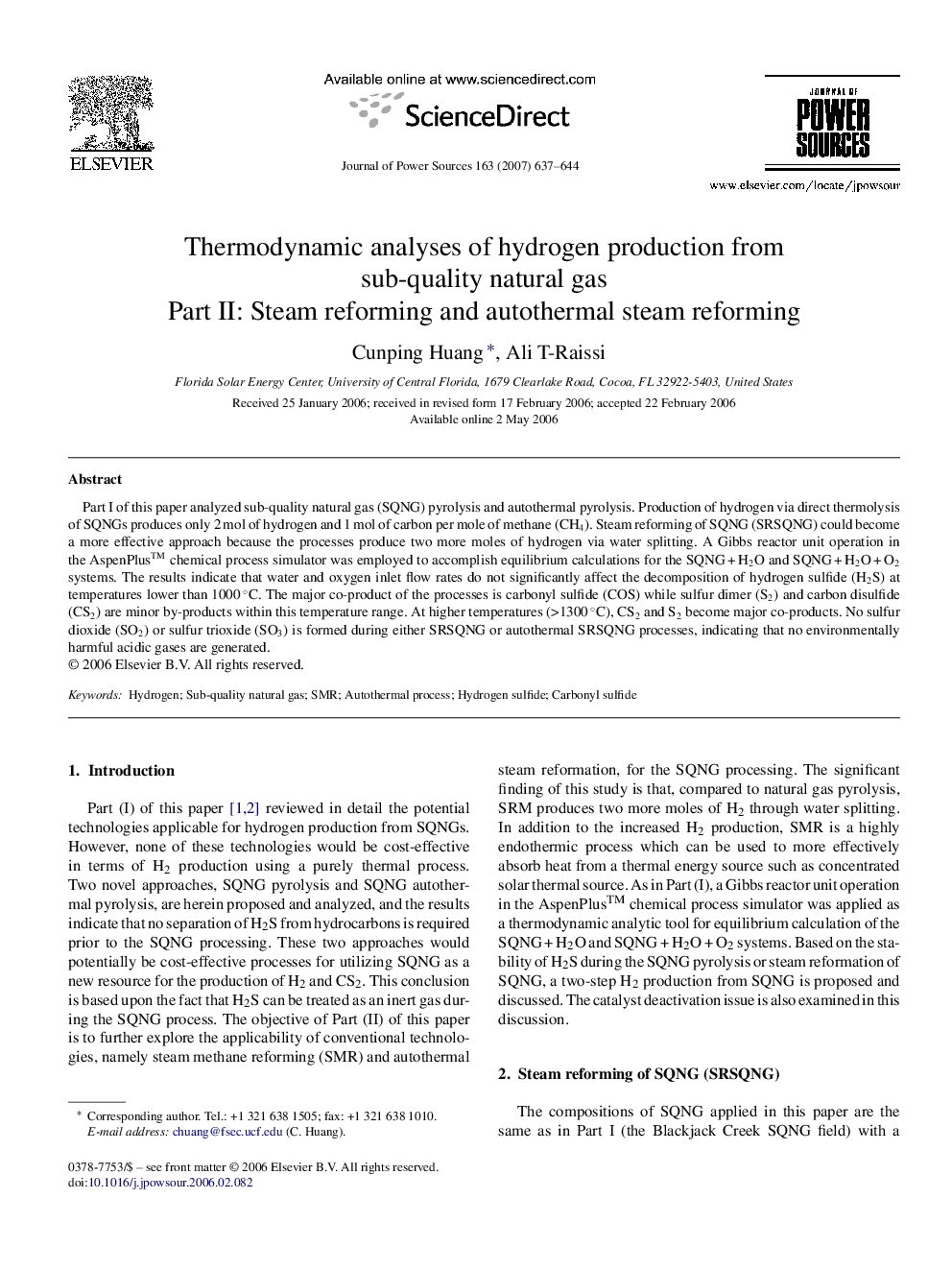| Article ID | Journal | Published Year | Pages | File Type |
|---|---|---|---|---|
| 1286892 | Journal of Power Sources | 2007 | 8 Pages |
Abstract
Part I of this paper analyzed sub-quality natural gas (SQNG) pyrolysis and autothermal pyrolysis. Production of hydrogen via direct thermolysis of SQNGs produces only 2 mol of hydrogen and 1 mol of carbon per mole of methane (CH4). Steam reforming of SQNG (SRSQNG) could become a more effective approach because the processes produce two more moles of hydrogen via water splitting. A Gibbs reactor unit operation in the AspenPlus⢠chemical process simulator was employed to accomplish equilibrium calculations for the SQNG + H2O and SQNG + H2O + O2 systems. The results indicate that water and oxygen inlet flow rates do not significantly affect the decomposition of hydrogen sulfide (H2S) at temperatures lower than 1000 °C. The major co-product of the processes is carbonyl sulfide (COS) while sulfur dimer (S2) and carbon disulfide (CS2) are minor by-products within this temperature range. At higher temperatures (>1300 °C), CS2 and S2 become major co-products. No sulfur dioxide (SO2) or sulfur trioxide (SO3) is formed during either SRSQNG or autothermal SRSQNG processes, indicating that no environmentally harmful acidic gases are generated.
Related Topics
Physical Sciences and Engineering
Chemistry
Electrochemistry
Authors
Cunping Huang, Ali T-Raissi,
